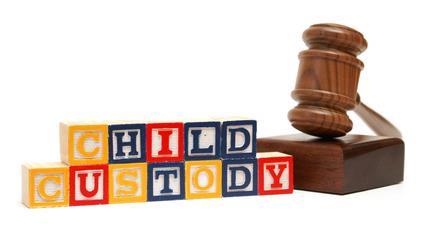 As with anything else your state’s divorce laws will dictate the types of child custody that are available via the Family Court in your jurisdiction. This article is an outline of the most common ways child custody is dealt with during divorce. Which one is best for your child?
As with anything else your state’s divorce laws will dictate the types of child custody that are available via the Family Court in your jurisdiction. This article is an outline of the most common ways child custody is dealt with during divorce. Which one is best for your child?
In your state you will find some variation on these forms of child custody:
- Legal Custody
- Sole Custody
- Joint Custody
Legal Child Custody:
Legal custody means that you have the right to make “legal” decisions about your child’s upbringing. You may be awarded sole legal custody or joint legal custody. With joint legal custody, you and your ex will share the decision-making process.
You will both decide, together what is best for your child on subjects such as education, medical issues or religion. If either parent excludes the other parent from the decision-making process, you take the risk of being held in contempt for violating a court order. Joint legal custody is the most common type of custody awarded by the Family Court
If you are awarded sole legal custody, you will have the right to make all decisions about your child’s upbringing without consulting the other parent. Sole legal custody is rare unless you can prove your ex is incapable for making proper decisions that are in your child’s best interest.
Sole Custody:
Unless you can prove your ex unfit, sole custody of your child is almost impossible to obtain. As it should, the Family Court encourages a large role for both parents in a child’s life. Unless your ex is addicted to drugs, alcohol or you have proof of some form of child abuse the best possible outcome for your child is joint legal and physical custody.
Joint Custody:
Joint or shared custody happens when both parents share equal time and equal decision-making responsibilities in their child’s life. Joint custody can include any of the below:
- Joint legal custody
- Joint physical custody (the children spend the equal amount of time with each parent)
- Joint legal and physical custody
Since joint legal and physical custody is the norm in most divorce situations let’s focus on that. Below are some of the pros and cons of joint legal and physical custody:
Pros of Joint Legal and Physical Custody:
- Your child will continue to have a close relationship with both parents.
- You don’t have to carry the weight of parenting alone. It isn’t easy to grasp when first divorced but as time goes on you will understand the burden of parenting alone and the virtue of having an ex who shares the parenting responsibility 50/50.
- You and your ex working together in a civil manner for what you both know is in the best interest of your child will teach the child a valuable lesson.
- Children who have parents who get along and put them first are far less likely to suffer negative consequences related to their parents’ divorce.
Cons of Joint Legal and Physical Custody:
- It only makes sense that children will be uncomfortable with being shuffled from Dad’s house to Mom’s house on a regular basis. You have to weigh the importance of your child’s relationship with both parents to the inconvenience of being shuffled around.
- If one parent is unreasonable, angry and unwilling to negotiate with the other parent conflict will be heightened. When there is conflict parenting is more stressful AND children become collateral damage of the unreasonable parent.
- Two homes will need to be maintained where your child has a room in both homes, toys, clothes and necessities. This can be money intensive and should be considered by both parents before agreeing on joint legal/physical custody.

Leave a Reply